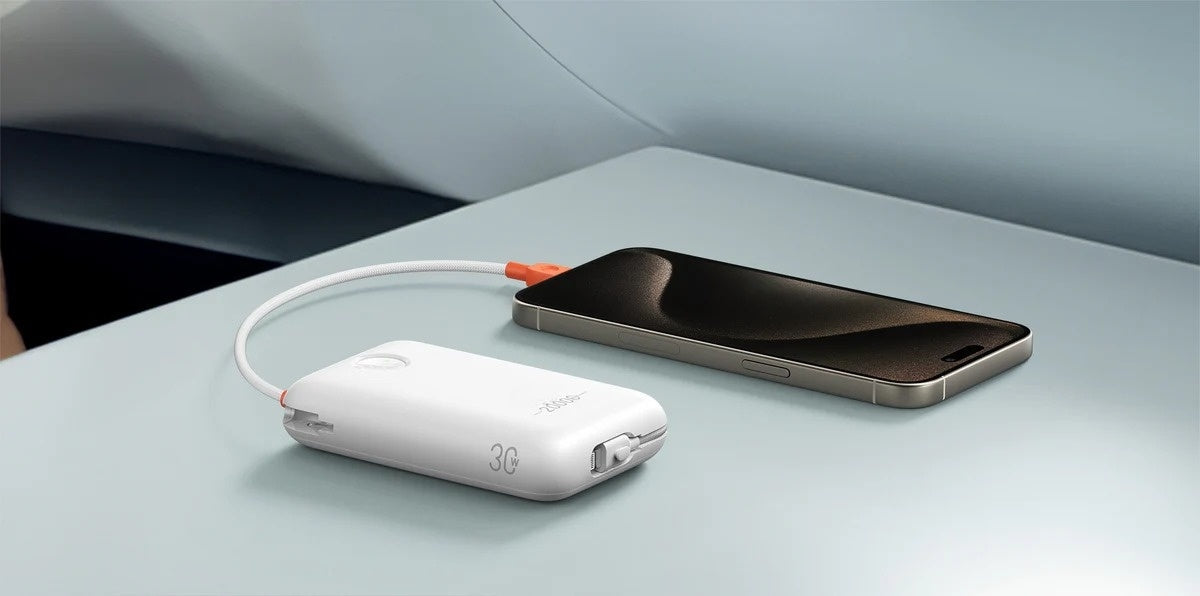Running out of battery and realizing you’ve left your laptop charger at home is a nightmare we’ve all lived through. Whether you're traveling, stuck at the office, or facing a charger malfunction, finding a solution becomes urgent. The good news? You’re not entirely powerless.
In this hands-on guide, we’ll walk you through how do you charge a laptop without a charger, using practical alternatives like USB-C PD, laptop power banks, car ports, and more. You’ll also learn what to avoid, what you need to make it work, and how to stay prepared in the future.
Can You Charge a Laptop without a Charger?
Yes, you can—but it depends on the type of laptop and the available ports. If your laptop supports USB-C Power Delivery (PD), your options expand significantly. For other models, you'll need more specialized tools like universal adapters, power banks, or even power stations.
However, keep in mind that not every charging method works universally. You’ll need to check your laptop’s compatibility with voltage, wattage, and port type before trying an alternative solution.
What You Need to Know before You Charge a Laptop without a Charger
Before testing any of the methods in this guide, you should:
- Verify your laptop’s power input type (USB-C PD, barrel jack, proprietary plug, etc.).
- Check voltage and wattage requirements—usually printed near the charging port or on the original charger.
- Inspect available ports on the laptop (USB-C, HDMI, etc.).
- Avoid using low-wattage chargers, which may damage your battery or simply not work.
- Use original or certified accessories to ensure safety.
These precautions ensure that your chosen charging method won’t damage your device—or worse, void your warranty.
How Do You Charge a Laptop without a Charger
There are multiple ways to answer the question: how do you charge your laptop without a charger. Let’s explore each in detail.
1. Use USB-C PD to Charge Without a Charger
If your laptop has a USB-C port that supports Power Delivery (PD), this is the easiest and safest method. USB-C PD chargers deliver high-wattage power—up to 100W—sufficient for most laptops. Here is the steps:
- Confirm your laptop supports USB-C PD (check the port label or manufacturer’s site).
- Use a high-quality USB-C to USB-C cable with a PD charger (rated 45W or more).
- Plug in and monitor charging speed—many devices show PD fast-charging status.
If you're in a pinch, you can even borrow a USB-C charger from a newer MacBook, Chromebook, or tablet. Just make sure it meets your laptop’s power demands.
2. Use a Laptop Power Bank as an Alternative
A laptop power bank is a high-capacity battery with USB-C PD output. It’s portable and ideal for charging on the go.
Why Veger laptop power banks stand out? Veger designs laptop power banks that support 35W or higher output, perfect for laptop charging. With smart safety features, fast charging protocols, and international certifications, they’re ideal for anyone asking how to charge laptop without charger and power bank already on hand. This is arguably the most efficient method for frequent travelers and remote workers.
Learn more about how to charge a laptop with a power bank.
3. Charge a Laptop in a Car or with Power Stations
If you're traveling, working remotely, or camping off-grid, using your car or a portable power station can be a reliable way to charge your laptop without its original charger.
Car Method
Use a USB-C car charger that supports Power Delivery (PD) and is rated for at least 60W. Plug the charger into your car’s power outlet and connect it to your laptop’s USB-C port. For best results and to avoid draining your car battery, keep the engine running while charging.
Portable Power Stations
Portable power stations with AC and DC outputs can also serve as effective charging solutions. Simply plug your laptop’s original adapter into the AC outlet, or use the USB-C PD port if available. Make sure the station provides enough wattage to match your laptop’s charging needs.
4. Universal Adapters & External Chargers
Universal laptop adapters come with interchangeable tips and variable voltage settings. These are plug-and-play options especially useful for older laptops without USB-C ports. Here is what to do:
- Set the correct voltage using the switch (usually between 16V to 20V)
- Match the tip to your laptop model
- Plug it into an AC outlet and charge normally
You can also try external battery chargers if your laptop has removable batteries. Remove the battery, charge it externally, and reinsert once it’s full. However, this method is becoming rare due to built-in battery designs.
5. Charging via Another Laptop (USB-C Dual PD)
If both laptops support USB-C PD, one can charge the other through a USB-C to USB-C cable. To do this:
- Connect both laptops via a USB-C cable
- On the donor laptop, enable power output (check BIOS or OS settings)
- Monitor current flow—your charging laptop should detect the incoming power
This is a handy emergency solution but drains the donor laptop quickly.
6. Smartphone Charger (USB-C) – Emergency Top-Off
Smartphone chargers that support USB-C PD can offer a very slow but temporary solution—only if your laptop accepts low-watt input. For light use only:
- Great for keeping your laptop alive for emails or document access
- Expect ultra-slow charging; not suitable for performance-heavy tasks
- Ideal in airports or public spaces when nothing else is available
7. HDMI Power Trick (Rare, Slow)
This is more of a novelty than a real solution. Some claim HDMI ports can deliver trickle charging, but power output is negligible and highly unreliable.
We recommend this only for experimentation or last resorts.
Why Is My Laptop Not Charging with These Alternatives?
If none of the alternative charging methods are working, the issue might be due to incompatible ports—like using a non-PD USB-C connection—or an underpowered charger that can’t meet your laptop’s wattage needs. Faulty cables, non-certified accessories, or laptop settings that block non-original chargers could also be the cause.
Try using a USB-IF certified PD charger and cable. Restart your laptop or reset settings like SMC (on MacBooks), lower screen brightness, and close background apps. Also, test another adapter or power source. Always confirm your laptop supports the method you're trying.
FAQ – How Do You Charge a Laptop without a Charger
Can I charge my laptop with a smartphone charger?
Only if it supports USB-C PD and your laptop allows low-wattage input. Otherwise, it won’t work or will be extremely slow.
Can you charge a laptop with a USB port or another laptop?
Yes, if both support USB-C PD and you're using the correct type of USB-C cable.
Will slower alternative methods damage my laptop battery?
Not directly, but consistently using underpowered chargers may shorten battery life. Always match or exceed the required wattage.
Is it safe to use a universal adapter?
Yes—if it has the right voltage, polarity, and tip. Avoid generic brands without certifications.
Conclusion
Next time you’re caught without your charger, you won’t have to panic. Now you know how do you charge your laptop without a charger, from USB-C PD to power stations and car outlets.
For the most reliable solution, invest in a Veger laptop power bank with 35W+ PD output. Designed for safety, speed, and travel-readiness, Veger makes off-grid laptop charging easy. Explore our full line of PD-compatible, airline-safe portable chargers.

![How Do You Charge a Laptop Without a Charger [2025 Guide]](http://www.vegerpower.com/cdn/shop/articles/how-do-you_-charge-a-laptop-without-a-charger.png?v=1753175989&width=1500)

![What to Do If Power Bank Is Swollen [Expert Tip]](http://www.vegerpower.com/cdn/shop/articles/swollen-power-bank_37d4a9b7-3372-484f-98a6-03e7cd82d4da.webp?v=1753165226&width=1000)
